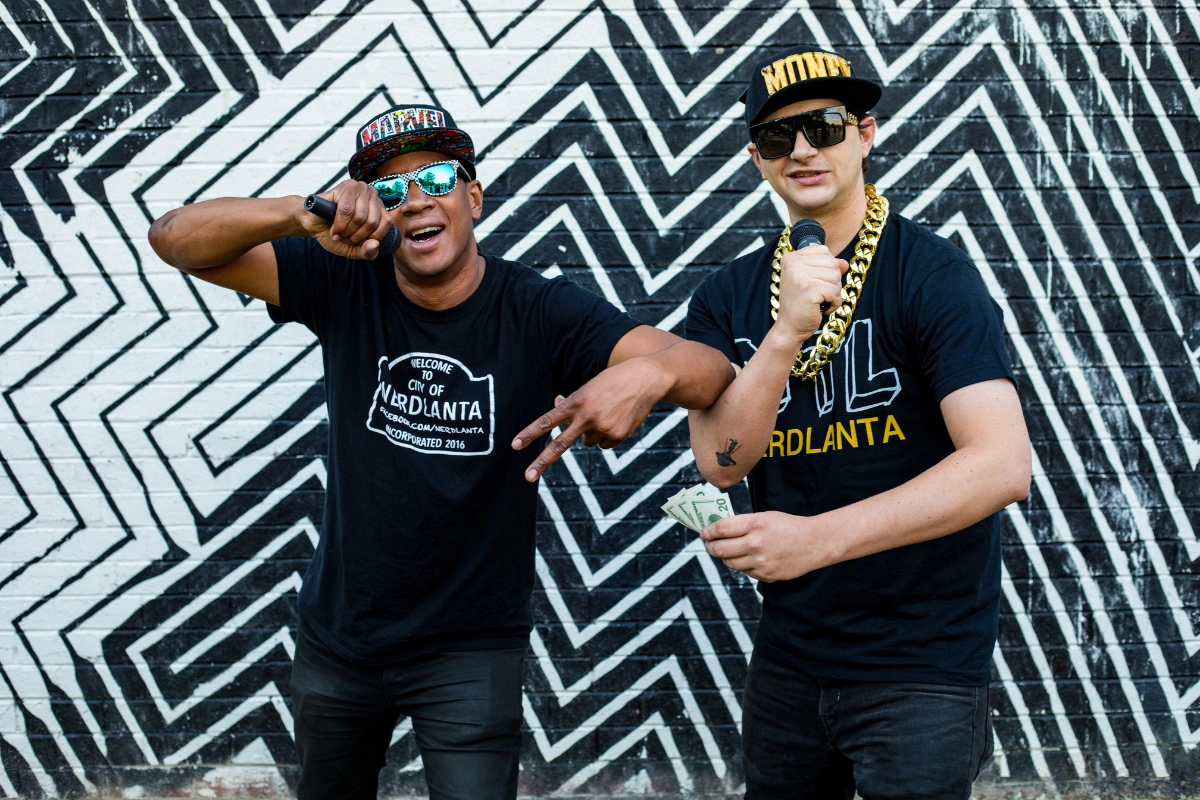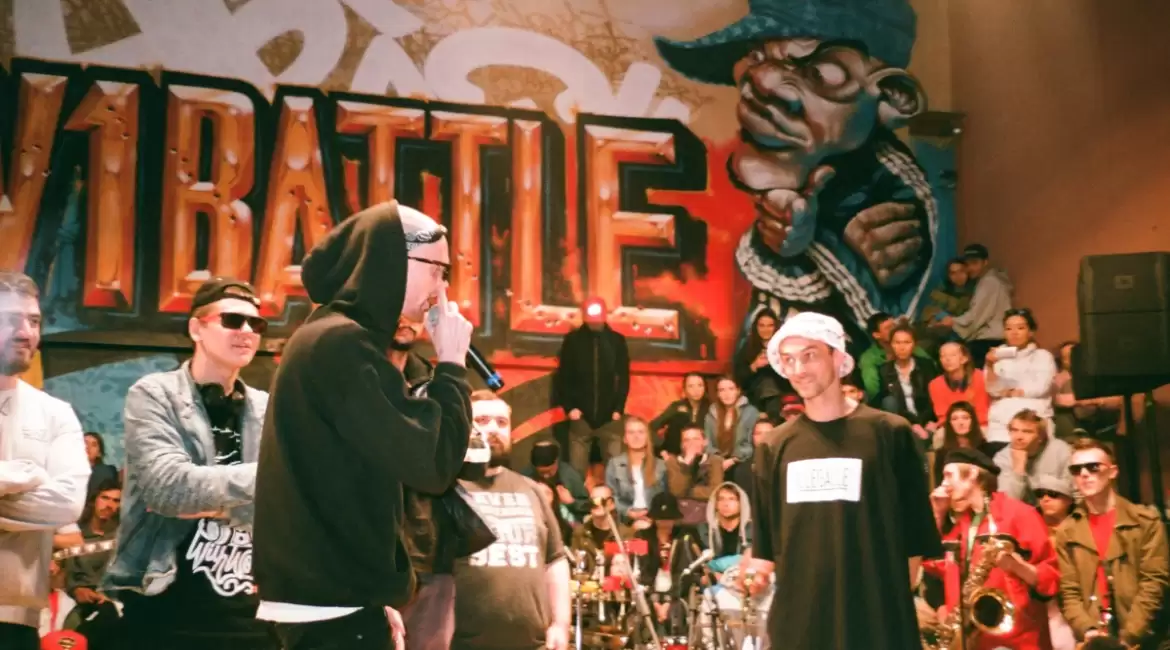In the vibrant tapestry of Hip Hop culture, few elements stand as prominently as the art of MCing. From the bustling streets of New York City to the global stage, MCs have wielded the power of words to captivate audiences, challenge societal norms, and shape the very fabric of contemporary music. In this exploration, we delve into the rich history, cultural significance, and enduring legacy of MCing as the heartbeat of Hip Hop.
Rooted in the traditions of African oral storytelling and poetic expression, MCing emerged as a dynamic form of artistic expression amidst the socio-economic upheavals of urban America in the 1970s. From its humble beginnings in neighborhood block parties and underground clubs, MCing quickly became synonymous with the burgeoning Hip Hop movement, serving as a vehicle for self-expression, empowerment, and cultural identity.
As we journey through the evolution of MCing, we uncover its multifaceted nature, from the raw energy of freestyle battles to the nuanced storytelling of concept albums. We examine the role of the MC as a griot, a keeper of tradition and a voice for the voiceless, weaving together narratives of struggle, resilience, and triumph in the face of adversity.
Furthermore, we explore the symbiotic relationship between MCing and other elements of Hip Hop culture, from DJing and graffiti art to breakdancing, illustrating how these diverse expressions converge to form a cohesive and vibrant cultural tapestry.
Through interviews with pioneering MCs, cultural historians, and contemporary practitioners, we gain insight into the creative process, the social impact, and the ongoing evolution of MCing in an ever-changing world.
Join us on this journey as we celebrate the artistry, the innovation, and the indomitable spirit of MCing – the beating heart of Hip Hop.
What is MCing?
MCing, short for Master of Ceremonies, encompasses a multifaceted role within the realm of Hip Hop culture. At its core, MCing revolves around the oral expression of artistry, serving as a conduit for lyrical prowess, storytelling, and audience engagement. Rooted in a rich tapestry of historical, cultural, and social influences, MCing is more than just a performance; it is a reflection of the evolving dynamics within urban communities and the African American experience.
The origins of MCing can be traced back to ancient African traditions of oral storytelling and poetic expression. Through the art of MCing, individuals wield the power of language to captivate audiences, convey narratives, and articulate the collective experiences of their communities. As the Hip Hop movement emerged and flourished, MCing emerged as one of its foundational pillars, intertwining with other elements such as DJing, graffiti art, and breakdancing to form a holistic expression of cultural identity.
In the context of Hip Hop culture, the MC serves as both an entertainer and a cultural ambassador, adept at navigating the intricate rhythms of the music and the nuances of the social landscape. Beyond mere entertainment, MCing carries a profound significance as a means of resistance, resilience, and empowerment. Through their verses, MCs confront social injustices, celebrate cultural heritage, and challenge prevailing narratives, thereby shaping the collective consciousness of their audience.
Moreover, MCing transcends the boundaries of performance, extending its influence into realms such as education, activism, and community building. As custodians of language and guardians of tradition, MCs play a pivotal role in preserving the authenticity and integrity of Hip Hop culture while simultaneously pushing its boundaries forward.
MCing represents a dynamic fusion of artistry, activism, and cultural expression. It embodies the spirit of innovation, resilience, and creative ingenuity, serving as a testament to the enduring legacy of Hip Hop as a global phenomenon and a vehicle for social change.

When Did MCing Become Prevalent?
The emergence and prevalence of MCing trace back to the vibrant cultural landscape of the 1970s and 1980s. During this transformative era, MCing, colloquially known as rapping, assumed a prominent role within the burgeoning Hip Hop movement, reshaping the musical and social fabric of urban communities.
At its essence, MCing refers to the art of verbal expression, characterized by rhythmically intricate verses, spontaneous freestyles, and dynamic wordplay. The MC, often synonymous with the modern-day rapper, serves as the lyrical maestro, orchestrating the sonic landscape and commanding the attention of audiences with their commanding presence and linguistic dexterity.
Beyond its role as a performer, the MC functions as a cultural conduit, bridging the gap between the DJ and the audience, facilitating a symbiotic relationship between music and community. Through their skillful delivery and magnetic charisma, MCs harness the power of language to energize crowds, introduce musical acts, and ignite a collective sense of euphoria.
The term “MC” itself has evolved over time, acquiring various connotations and interpretations. While commonly understood as an abbreviation for “Master of Ceremonies,” it has also been interpreted as “Microphone Controller,” “Mic Checka,” or “Music Commentator,” reflecting the multifaceted nature of the MC’s role within Hip Hop culture.
Interestingly, the roots of MCing can be traced back to the vibrant dance halls of Jamaica, where announcers played a pivotal role in introducing performers and engaging audiences. This tradition migrated to the streets of New York City during the 1970s, where it took on new dimensions within the context of urban youth culture.
Moreover, the term “MC” transcends its linguistic origins, serving as a symbol of empowerment and cultural identity for marginalized communities. In the context of 1970s New York City, it was often used to label the children of maids, reflecting the socio-economic realities of the time while also encapsulating a sense of resilience and defiance.
MCing represents more than just a musical genre or performance style; it embodies a spirit of creativity, innovation, and cultural resistance. As Hip Hop continues to evolve and proliferate on a global scale, the legacy of MCing remains a testament to the enduring power of words and the transformative potential of music as a force for social change.

Battle of the MCs
The Battle of the MCs stands as a cornerstone within the realm of Hip Hop culture, representing a dynamic fusion of lyrical prowess, competitive spirit, and artistic expression. Dating back to the formative years of Hip Hop, MC battles have evolved into a ritualistic spectacle, captivating audiences and shaping the narrative of the culture.
At its core, the MC battle pits two wordsmiths against each other in a verbal joust, where they engage in a verbal sparring match, showcasing their mastery of rhythm, rhyme, and wordplay. This tradition harkens back to the raw, improvisational spirit of early Hip Hop gatherings, where MCs would vie for supremacy on the mic, seeking to outshine their opponents with blistering flows and razor-sharp wit.
Yet, the significance of the MC battle transcends mere competition; it serves as a crucible for artistic innovation and cultural expression. In the heat of battle, MCs harness the power of language to craft vivid narratives, dismantle their opponents’ defenses, and command the respect of their peers and audience alike.
Moreover, the stakes of the MC battle extend beyond individual glory; they encompass broader themes of identity, community, and social commentary. As MCs trade verbal blows, they confront societal norms, challenge power dynamics, and offer a platform for marginalized voices to be heard.
Central to the essence of the MC battle is the notion of audience participation and validation. As MCs spar on stage, the audience serves as both judge and jury, determining the victor through their vocal reactions and applause. In this democratic forum, the loudest cheers and most fervent responses signal not only a triumph of skill but also a resonance of connection between the artist and their community.
The Battle of the MCs represents more than just a competition; it embodies the soul of Hip Hop culture, where creativity, authenticity, and resilience converge in a dynamic exchange of words and rhythms. As this tradition continues to evolve and thrive in the digital age, the legacy of the MC battle endures as a testament to the enduring power of language and the transformative potential of music as a vehicle for social change.

Summary
In conclusion, MCing stands as a pillar of Hip Hop culture, embodying the essence of creativity, resilience, and community. From its origins in the Bronx to its global reach today, MCing has transcended geographical boundaries and cultural barriers, uniting diverse voices under a shared passion for music and expression.
As we reflect on the journey of MCing, we are reminded of its profound impact on society, from providing a voice for marginalized communities to serving as a catalyst for social change. Through the power of words and rhythm, MCs have challenged injustice, celebrated diversity, and inspired generations to dream, aspire, and strive for a better world.
Looking ahead, the legacy of MCing remains as vibrant and relevant as ever. As new generations of artists emerge, carrying forward the torch of innovation and creativity, MCing continues to evolve, adapt, and shape the cultural landscape of tomorrow.


Leave a reply